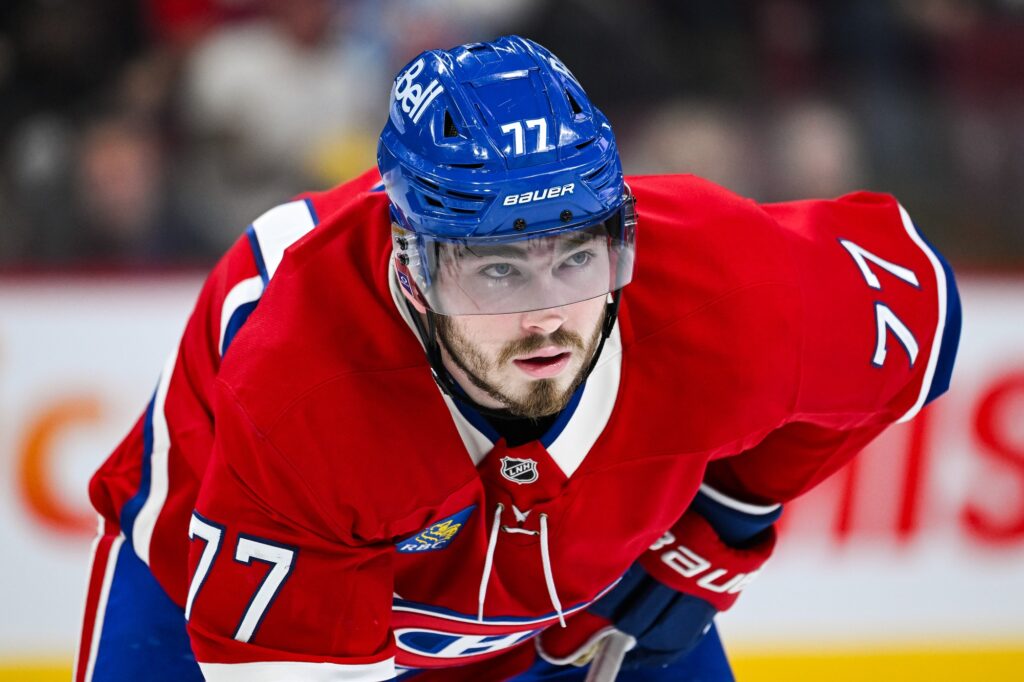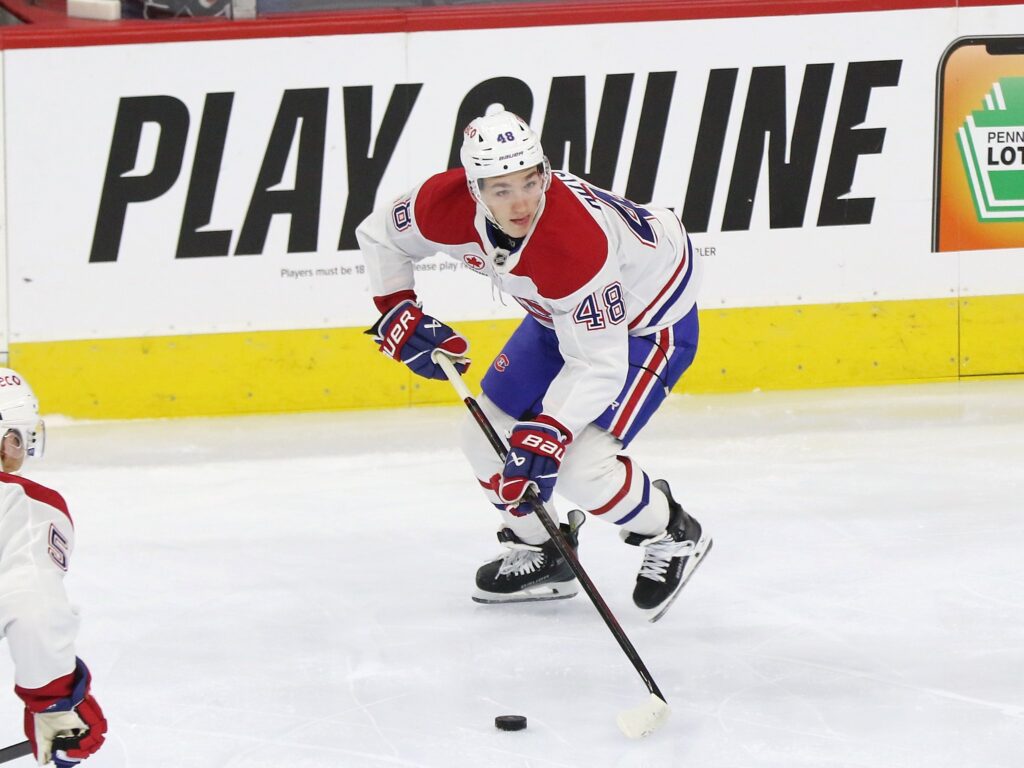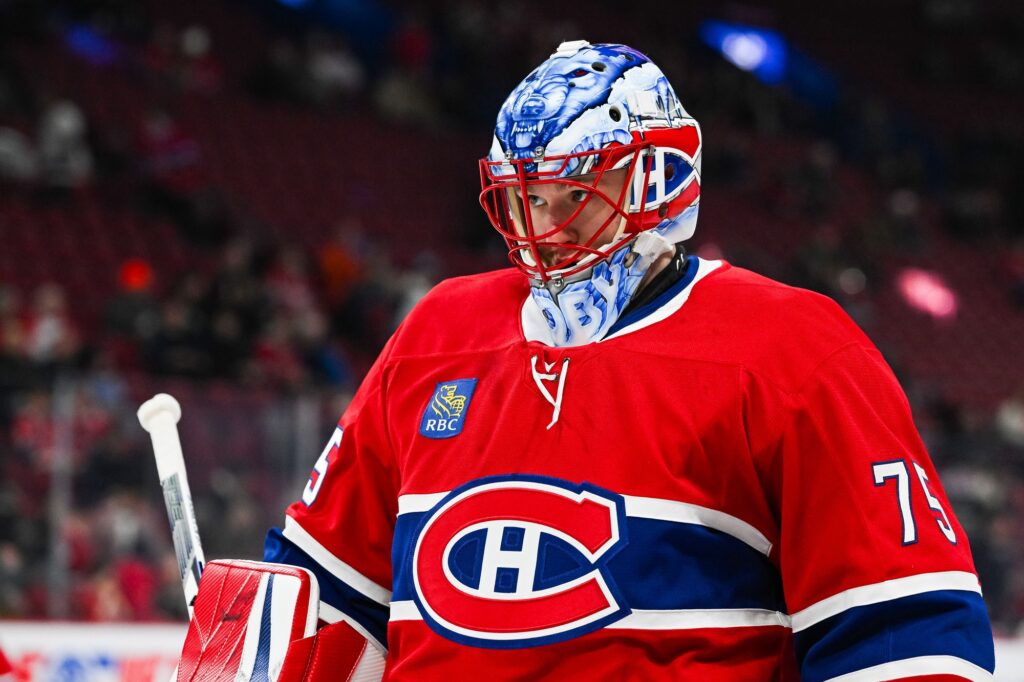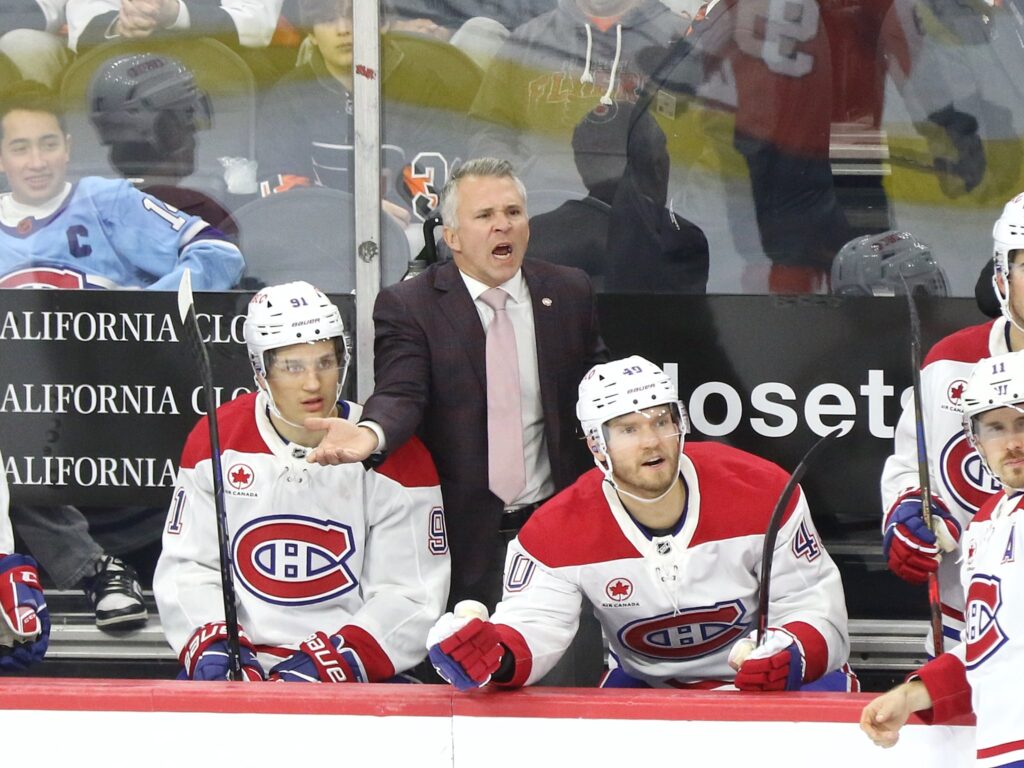The faint chill in the air and the smell of freshly scraped ice can only mean one thing: training camp is upon us. For the Montreal Canadiens, this isn’t just a tune-up; it’s the proving ground. After a surprising and exhilarating run to a playoff berth on the back of a 91-point season, the narrative has shifted. The team is no longer a plucky underdog happy to be in the conversation. Now, expectations are real, and the next step in this rebuild is the most difficult one to take. With 60 players descending on camp—42 of them on NHL contracts—roster spots are at a premium, and the internal competition promises to be a bare-knuckle affair that will forge the identity of the 2025-26 Canadiens.
Also on the EDGE – Brossard Battleground: Key Questions Facing the Canadiens at Training Camp
While battles will rage across the depth chart, the entire hockey world in Montreal is fixated on one position: centre ice. How the dominoes fall down the middle of the ice will dictate not just the opening night lineup, but whether this team can elevate itself from a one-off playoff surprise to a genuine, sustainable contender.
The Great Centre Ice Conundrum
Beyond captain Nick Suzuki’s undisputed role as the 1C and Jake Evans’ reliable presence in the bottom-six, the Canadiens’ depth chart at centre is a massive, burning question mark. General Manager Kent Hughes and Head Coach Martin St. Louis have assembled a fascinating mix of recovering veterans, hungry newcomers, and high-ceiling prospects to compete for what could be one, or even two, open roster spots.
The entire equation hinges on the health of one man: Kirby Dach. His season-ending knee injury was a devastating blow last year, and his recovery is the single most critical variable heading into camp. All reports indicate his summer training has progressed well with no setbacks, but until he’s taking contact and skating at full intensity, a cloud of uncertainty will linger. A healthy Dach is, without question, the team’s best option for a second-line centre. His size, skill, and defensive conscience would solidify the top-six, create favourable matchups for Suzuki’s line, and allow every other centreman to slot into a role that better suits their abilities. His presence provides structure; his absence creates a vacuum that several players could combine to fill.

One of those players is Montreal native Joe Veleno. Signed as an unrestricted free agent this summer, Veleno comes to camp with what is being called the “inside track” for a bottom-six job. He’s a player built in the mold St. Louis covets: he plays with pace and isn’t afraid to engage physically, as evidenced by his 139 hits last season. He brings a blend of energy and defensive responsibility that would make him an ideal fourth-line pivot, especially if Dach’s return pushes Evans up to the third line.
While Veleno represents the veteran option, a pair of promising youngsters are looking to force management’s hand. Oliver Kapanen and Owen Beck are both coming off strong seasons in the AHL, but Kapanen appears to have the slight edge. He’s older, has a taste of NHL action, and was notably prioritized at centre during the Laval Rocket’s playoff run, a clear signal from the organization. His responsible, two-way game is projectable to the NHL level. Beck, however, won’t go quietly. An AHL All-Star in his own right, he’s physically stronger than Kapanen and is already an elite faceoff specialist. The front office has been patient with its prospects, and rushing either player is unlikely. But a dominant camp performance can change even the best-laid plans.
Then there’s the wild card. The dark horse. The player whose unique toolkit could blow the competition wide open: Florian Xhekaj. Dubbed “the Unicorn,” the younger brother of defenseman Arber Xhekaj is anything but a typical prospect. Standing at 6-foot-4, he combines legitimate scoring touch (24 goals in the AHL) with a ferocious physical edge (175 penalty minutes). He’s the prototypical power forward that the Canadiens have desperately needed. Last year’s playoff loss to Washington exposed a lack of size and snarl in the forward group, a deficiency Xhekaj could remedy in a hurry. He may be a long shot, but his specific and rare combination of skills makes him perhaps the most intriguing player to watch.
Also on the EDGE – Rocket Fuel: The Canadiens’ High-Octane Forward Corps for 2025-26
Reshaping the Blue Line
While the forward group grapples with its identity crisis, the defense corps is undergoing a more calculated transformation. The acquisition of top-pairing defenseman Noah Dobson was a seismic move, giving the team a legitimate workhorse to anchor the blue line for years to come. He joins a unit that already features Lane Hutson, the reigning Calder Trophy winner whose offensive dynamism captivated the league last season.

With the top of the defensive depth chart looking more formidable than it has in years, the competition shifts to the bottom pairing and special teams roles. The bruising Arber Xhekaj and the steady Jayden Struble will be in a direct dogfight for ice time. Both bring a coveted physical element, but they’ll need to prove their defensive reliability to earn a permanent spot on the penalty kill and in late-game situations. Also in the mix is 2023 first-round pick David Reinbacher. While likely ticketed for a top role in the AHL to start the season, Reinbacher will be at camp to demonstrate just how close he is to being NHL-ready, putting pressure on everyone above him on the depth chart.
Putting the Pieces Together for Another Playoff Push
Ultimately, these individual camp battles will coalesce to determine the collective fate of the team. Making the playoffs was the goal last year; this year, it’s the expectation. The additions of 2024 fifth overall pick Ivan Demidov and forward Zachary Bolduc are designed to inject more skill and firepower into the lineup. Demidov, an early Calder Trophy favorite, is expected to push for a top-six winger role immediately and should provide a significant boost to the power play.
The success of the season, however, will likely come down to two key areas. First is solving that centre dilemma. If Dach is healthy and effective, it creates a cascade of stability through the lineup, allowing players like Evans and Veleno to thrive in shutdown roles. This depth and clarity of roles are what separates playoff hopefuls from true playoff contenders.
Second is the performance between the pipes. Samuel Montembeault was outstanding last season, but the schedule-makers did the Canadiens no favours. With the most back-to-back games of any team in the NHL, the workload will be immense. Backup Jakub Dobeš will be called upon frequently and must provide reliable, quality starts to keep Montembeault fresh for the stretch run. A team can’t survive on a single goaltender in the modern NHL, and Dobeš’s performance will be a quiet but crucial factor in Montreal’s success.

From the first-day fitness testing to the final preseason cuts, this training camp is shaping up to be one of the most consequential in recent memory. It’s a showcase for a prospect pool—featuring names like Jacob Fowler—that has become the envy of the league. More importantly, it’s the crucible where a promising young team will attempt to forge a hardened, playoff-ready roster. The pieces are in place. The competition is set. Now, the battles begin.
Created with the aid of Gemini AI
